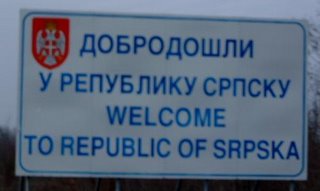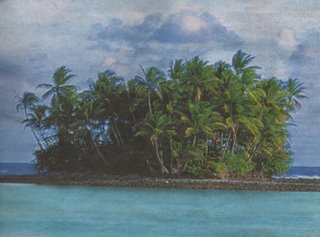
Normally my wonderfully resourceful and infinitely patient travel agent, Jeannine, books most of my hotels. I still get incredible corporate rates based on my old corporate president days-- and upgrades and extras... lovely; and I'm thankful to the universe. On my most recent trip-- to
DC and
Chicago-- she worked her magic in Chicago (more of that in a moment) and I decided to let the organization which had asked me to come to Washington handle the hotel details there. That's because Washington's third-rate, overpriced hotels are always booked up in awkward ways. If you'll be there Monday thru Friday, everything is cool except one detail-- like Tuesday isn't available. So, knowing the organization had a "deal" with a conveniently-located hotel that wouldn't cost me an arm and a leg, like the dependable but
expensive Ritz Carlton, I decided to let them sort it all out. Mistake.
I arrived the day before the meeting and, the
St. Gregory, a somewhat renovated, self-described "luxury hotel" didn't have a room. They did ask me for "picture ID," making me wonder if they've been having security problems. Someone behind the desk spoke passable English and we finally figured out that my reservation started
tomorrow. And, of course, they were booked solid. In fact, they told me, everyone was booked solid. I didn't relish walking around M Street with my two bags-- nor did I relish spending an hour trying to decipher the barely comprehensible English of the person pessimistically offering to help me find somewhere else to stay. I looked around at this gussied up dump (at
$314.88/night) and wondered if I could charm my way into the Ritz. What's another $200 a night? It didn't matter; they were booked. The Four Seasons was booked. Literally all those hotels on M were booked, like
The Fairmont and the
Park Hyatt.
Then I decided-- my bags starting to feel heavier than I remembered-- to climb down off my high horse and go across the street to the
Westin Grand. Sure, it's like a somewhat trumped up motel, but I was thinking I could save some money. I was correct about the motel quality of the service but not about saving any money. They didn't care that I'm a Starwood VIP cardholder or that my corporation has a great discount. I hadn't made any reservations in advance and they were very aware Washington was solidly booked and if I wanted the room, it was $500 a night, internet access extra. In fact,
everything is extra. I admit, the room was nice. It was the only nice thing about the place and I was happy to check into the hideous, security conscious St Gregory early the next morning.
They too charge for internet access, as sporadic and undependable as it turned out to be. The first time I ever went to Europe-- 1969-- I arrived in Luxembourg at night and my girlfriend and I were considerably less picky than I've since become. It was already night and we just plopped down in the first place we found. In the morning we discovered it was a whore house. Years later I visited an old friend who was residing in the same type of establishment in Bangkok. There's something about the St. Gregory-- maybe the way you have to insert your key to make the elevator run-- that reminds me of those places.
I don't know the restaurant scene in DC. Sometimes people take me out. Once I even got invited to a
state banquet at the house Bush is currently occupying. Normally I just eat at
either of the two Noras, the Asia Nora on M Street or the regular place at Florida and R. They're both as conscious about health and serving organic food as they are about serving great-tasting food. I had all my dinners in one or the other this time and all the dinners were delicious and reasonably priced.
I have to admit, though, that I was happy to be flying to Chicago. I always forget how much I love that city-- 'til I get there. It's even relatively nice flying there from DC since you can go from that conveniently located National Airport, a $20 cab ride away. National claims to have free WiFi but they don't, at least not in the United terminal. I made due, happily, with my book.

And when I got to Chicago, Jeannine's efforts kicked in. I stayed at the
Park Hyatt at 800 North Michigan Avenue. Before I explain why this is a world class luxury hotel, let me also say that it cost me considerably less than either of the two dives I stayed in in DC. The staff is impeccably trained and whether it was real or an act, they were all
always friendly, cheerful and helpful. The place has the feel of a boutique hotel and it wasn't until a day or two after I got there when I was walking to it that it dawned on me that it is actually a
huge hotel. The rooms are unbeatable; everything beautiful, comfortable, user-friendly, tasteful. Even f I was paying the outlandish prices at the Grand Westin or the St. Gregory I would have at least felt I was getting my money's worth.
First night I ate at the
Green Zebra on West Chicago Avenue, just down the road from my hotel. It's an upscale mostly vegetarian restaurant dedicated to perfect service and serving fresh, seasonal, flavorful food. It isn't cheap and the plates are small but it was delicious, engaging and interesting and I'd eat there again. The following night, however, the restaurant was chosen based on size. We needed a place that could accommodate 20 or so bloggers. I don't remember the name; no need.

My favorite spot in Chicago: the
Art Institute. Yep Chicago has one of the world's greatest art museums, certainly better than anything on the West Coast and right up there with the Met and MoMA in NYC, the Tate, the Louvre, El Prado...
Nighthawks the Hooper I was eager to see again was on tour but I got to marvel at some of the amazing works by Gustave Caillebotte, Georgia O’Keeffe, Francis Bacon, Magritte, Seurat and hours worth of paintings before I had to catch my plane back to L.A. Before leaving I booked a week at the same hotel in August.












